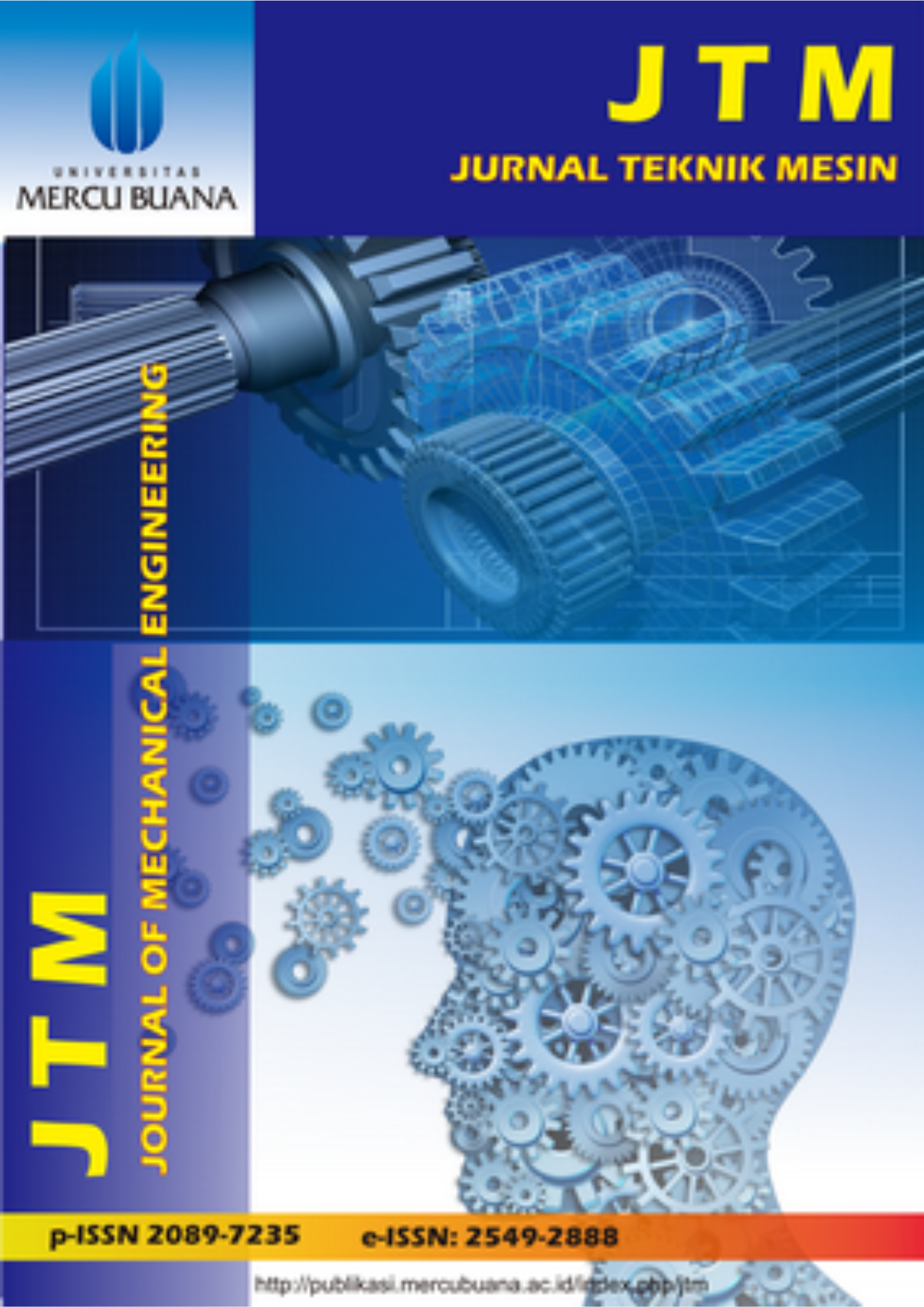OPTIMASI PENGGUNAAN BIOSORBENT BERBASIS BIOMASSA: PENGARUH KONSENTRASI AKTIVATOR TERHADAP LUAS PERMUKAAN KARBON AKTIF BERBAHAN ECENG GONDOK (EICHORNIA CROSSIPES) UNTUK MENINGKATKAN KUALITAS AIR
Abstract
Full Text:
PDFReferences
Acharya J, Sahu JN, Mohanty CR, Meikap BC (2009) Removal of lead (II) from wastewater by activated carbon developed from Tamarind wood by zinc chloride activation. Chemical Engineering Journal 149: 249-262.
Adnan Ozcan, Cigdem Omeroglu, Yunus Erdogan, A Safa Ozcan. (2007)Modification of bentonite with a cationic surfactant: An adsorption study of textile dye Reactive Blue 19. Journal of Hazardous Materials, 140:173-179.
Ardizzone, S., G. Gabrielli, and P. Lazzari. (1993). Adsorption of methylene blue at solid/liquid and water/air interfaces. Colloids Surfaces76:149–157.
Aroua MK, Leong SP, Teo LY, Yin CY, Daud WM (2008) Real-time determination of kinetics of adsorption of lead(II) onto palm shell-based activated carbon using ion selective electrode. Bioresour Technol 99: 5786-5792.
Auta M, Hameed BH. Preparation of waste tea activated carbon using potassium acetate as an activating agent for adsorption of Acid Blue 25 dye. Chemical Engineering Journal 2011, 171:502-509.
Boudrahem F, Aissani-Benissad F, Ait-Amar H (2009) Batch sorption dynamics and equilibrium for the removal of lead ions from aqueous phase using activated carbon developed from coffee residue activated with zinc chloride. Journal of environmental management 90: 3031-3039
Chongrak K; Eric H; Noureddine A; and Jean P. (1998).Application of Methylene Blue Adsorption to Fiber Specific Surface Area Measurement. J. Cotton Sci. 2:164-173
Darmodo, Stator dan Seagar. (1994). Logam dalam Sistem Biologi Makhluk Hidup, Universitas Indonesia Press, Jakarta.
Dwivedi CP, Sahu JN, Mohanty CR, Mohan BR, Meikap BC (2008) Column performance of granular activated carbon packed bed for Pb(II) removal. J Hazard Mater 156: 596-603.
Effendi, Hefni. (2003). Telaah Kualitas Air, Bagi Pengelolaan Sumber Daya dan Lingkungan Perairan. Yogyakarta : Kanisius.
E. Sanmuga Priya , P. Senthamil Selvan (2014) Water hyacinth (Eichhornia crassipes) – An efficient and economic adsorbent for textile effluent treatment – A review. Arabian Journal of Chemistry
El-Wakil AM, Abou El-Maaty WM and Awad FS (2014) Removal of Lead from Aqueous Solution on Activated Carbon and Modified Activated Carbon Prepared from Dried Water Hyacinth Plant. J Anal Bioanal Tech 2014, 5:2
Freundlich HMF. (1906) Über die adsorption in lösungen, Zeitschrift für Physikalische Chemie (Leipzig);57A:385-470.
Graham, D. (1955). Characterization of physical adsorption systems. III. The separate effects of pore size and surface acidity upon the adsorbent capacities of activated carbons. Phys. Chem. 59:896–900
Hardjono, Sastrohamdjojo. (1991). Spektroskopi. Yogyakarta : Liberty.
Ho YS, Huang CT, Huang HW. (2002) Equilibrium sorption isotherm for metal ions on tree fern, Process Biochem.;37:1421-1430.
Itodo A.U, Abdulrahman F.W, Hassan L.G, Maigandi S.A.4, Itodo H.U. (2010). Application of Methylene Blue and Iodine Adsorption in the Measurement of Specific Surface Area by four Acid and Salt Treated Activated Carbons. New York Science Journal ; 3 (5)
Langmuir I. (1918) The adsorption of gases on plane surfaces of glass, mica and platinum, Journal of American Chemical Society;40:1361-1403.
P. Tarapitakcheevin, P. Weerayutsil, and K. Khuanmar (2013) Adsorption of Acid Dye on Activated Carbon Prepared from Water Hyacinth by Sodium Chloride Activation. GMSARN International Journal 7, 83 – 90
R. Chen, Y. Zhang, L. Shen, X. Wang, J. Chen ,A. Mad, W. Jiang. (2015). Chem. Eng. J. 268-348.
Salleh MAM, Mahmoud DK, Karim WAWA, Idris A. Cationic and anionic dye adsorption by agricultural solid wastes: A comprehensive review. Desalination 2011, 280:1-13.
Shofiyani, A & Gusrizal. (2006). Pengaruh pH dan Penentuan Kapasitas Adsorpsi Logam Berat Pada Biomassa Eceng Gondok (Eichhornia crassipes). Jurusan Kimia, Fakultas Matematika dan Ilmu Pengetahuan Alam. Universitas Tanjung Pura, Pontianak.
Sugito, Heri, Wahyu SB, K. Sofjan Firdausi, Siti Mahmudah. (2005). Pengukuran Panjang Gelombang Sumber Cahaya Berdasarkan Pola Interferensi Celah Banyak.
T.A. Kurniawan, G.Y.S. Chan, W.H. Lo, S.Babel,. (2006). Chem. Eng. J. 118 83
Tjitrosoepomo G. (1996). Taksonomi Tumbuhan. Gadjah Mada University Press. Cet.Kelima. Yogyakarta
Wilbraham, A. (1992). Kimia Organik dan Hayati. Penerbit ITB. Bandung.
DOI: http://dx.doi.org/10.22441/jtm.v6i2.1193
Refbacks
- There are currently no refbacks.
Copyright (c) 2017 Jurnal Teknik Mesin
Jurnal Teknik Mesin (JTM)
Program Studi Teknik Mesin, Fakultas Teknik, Universitas Mercu Buana
Jl. Meruya Selatan No. 01, Kembangan, Jakarta Barat 11650, Indonesia
Email: [email protected]
Telp.: 021-5840815/ 021-5840816 (Hunting)
Fax.: 021-5871335
JTM is indexed by the following abstracting and indexing services:

This work is licensed under a Creative Commons Attribution-NonCommercial 4.0 International License.






.png)







_(486_x_90_px)_(486_x_190_px)_(486_x_190_px)_(4).png)
_(486_x_90_px)_(486_x_190_px)_(486_x_190_px)_(5).png)
2.png)
.png)